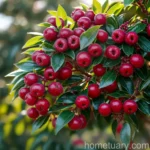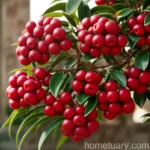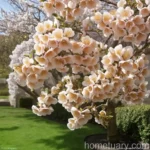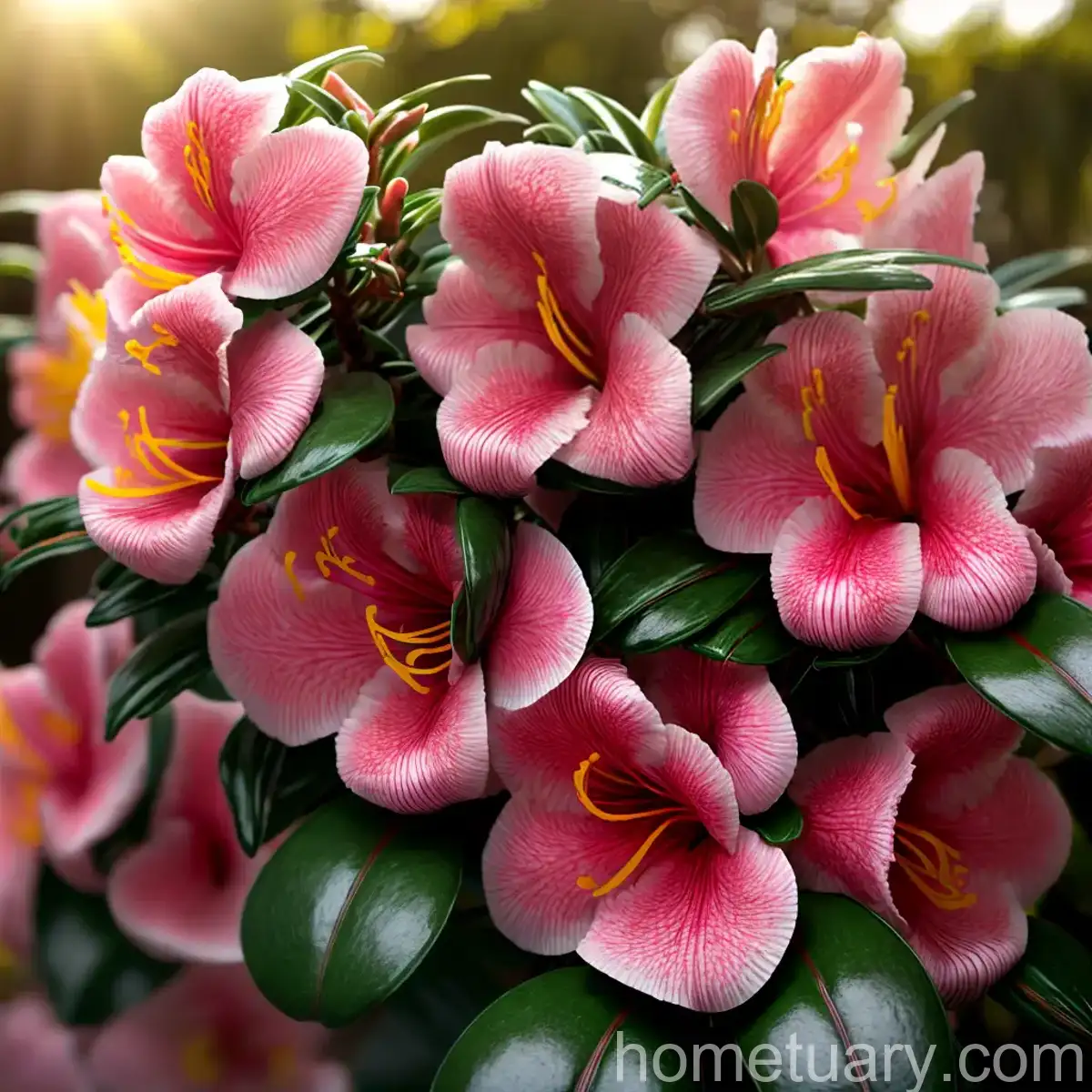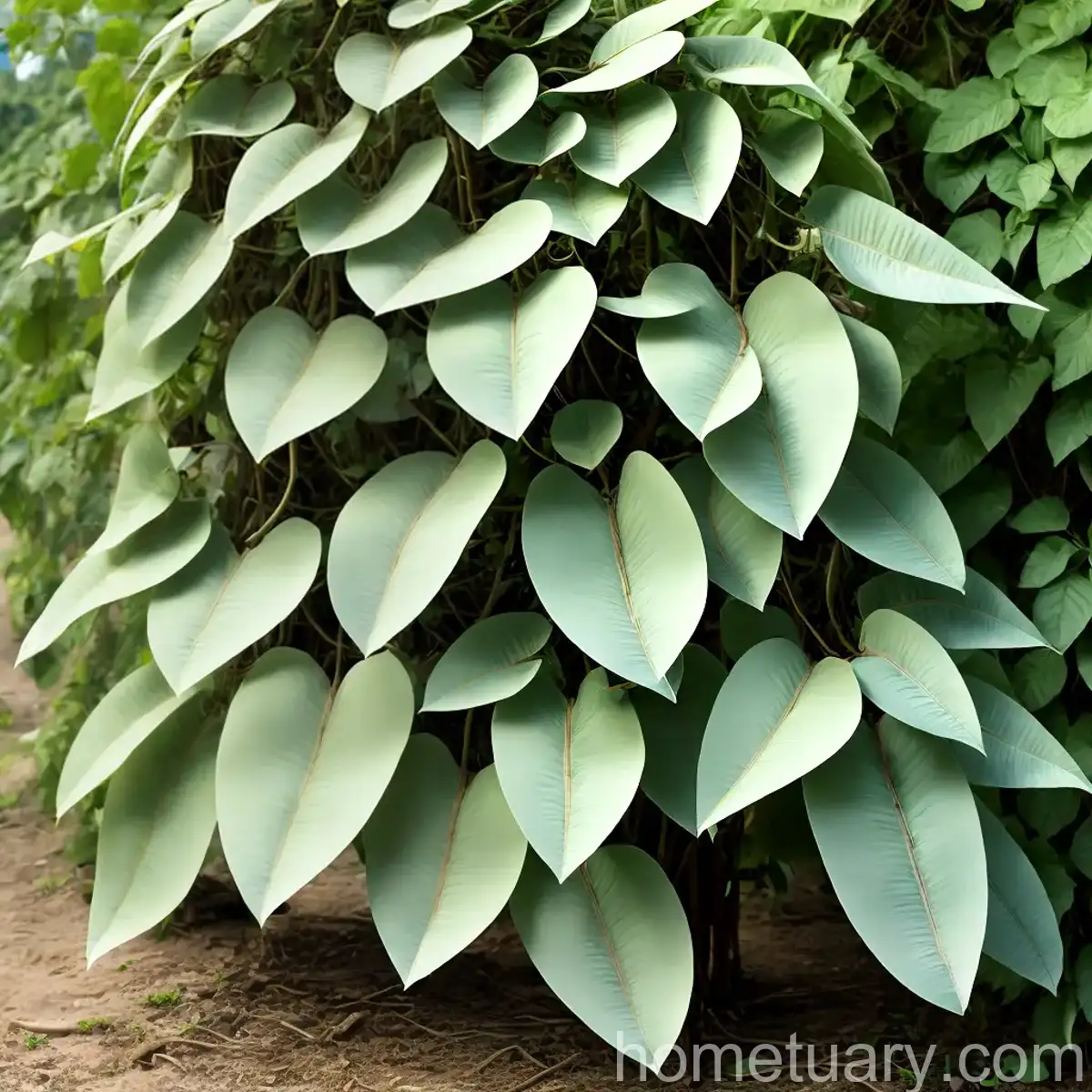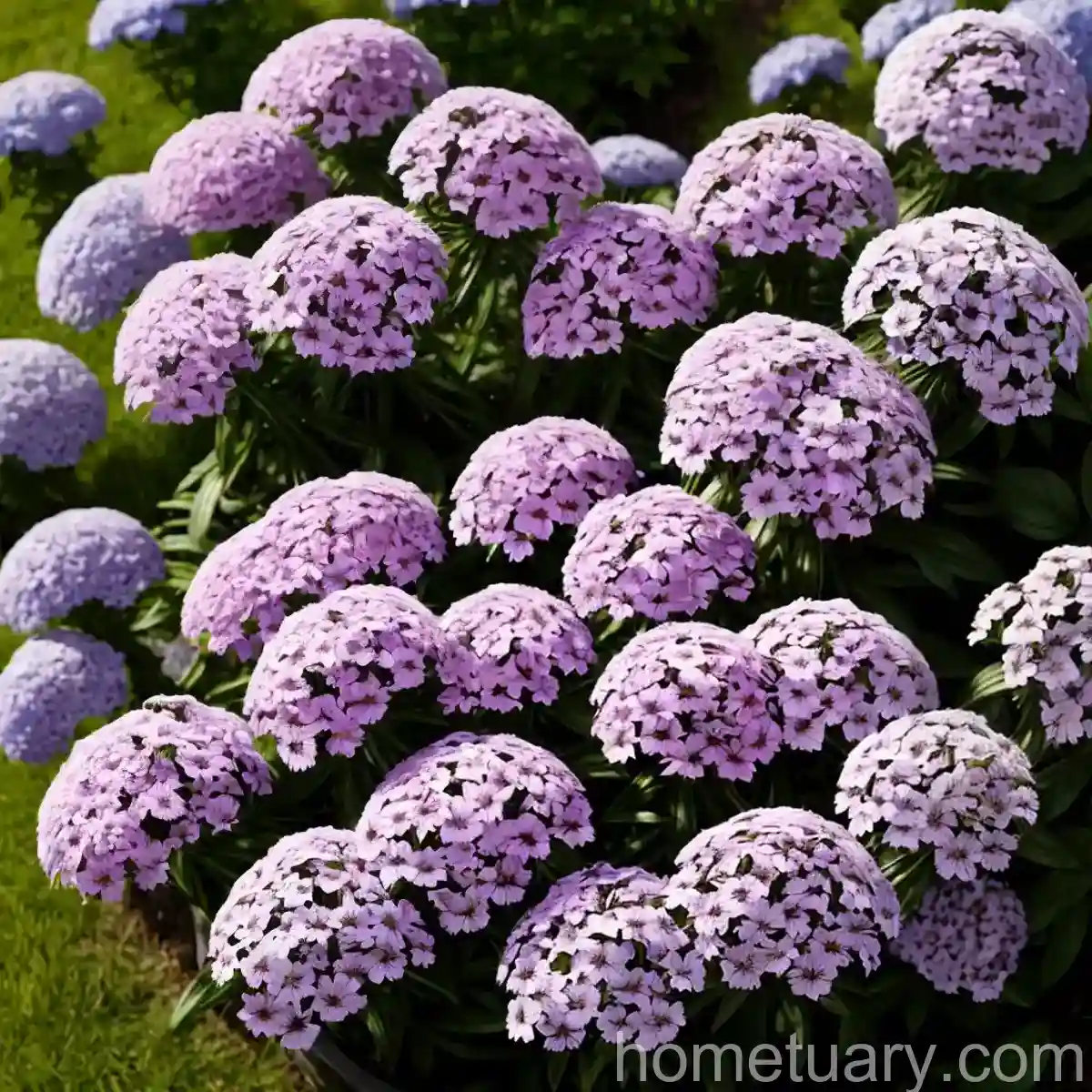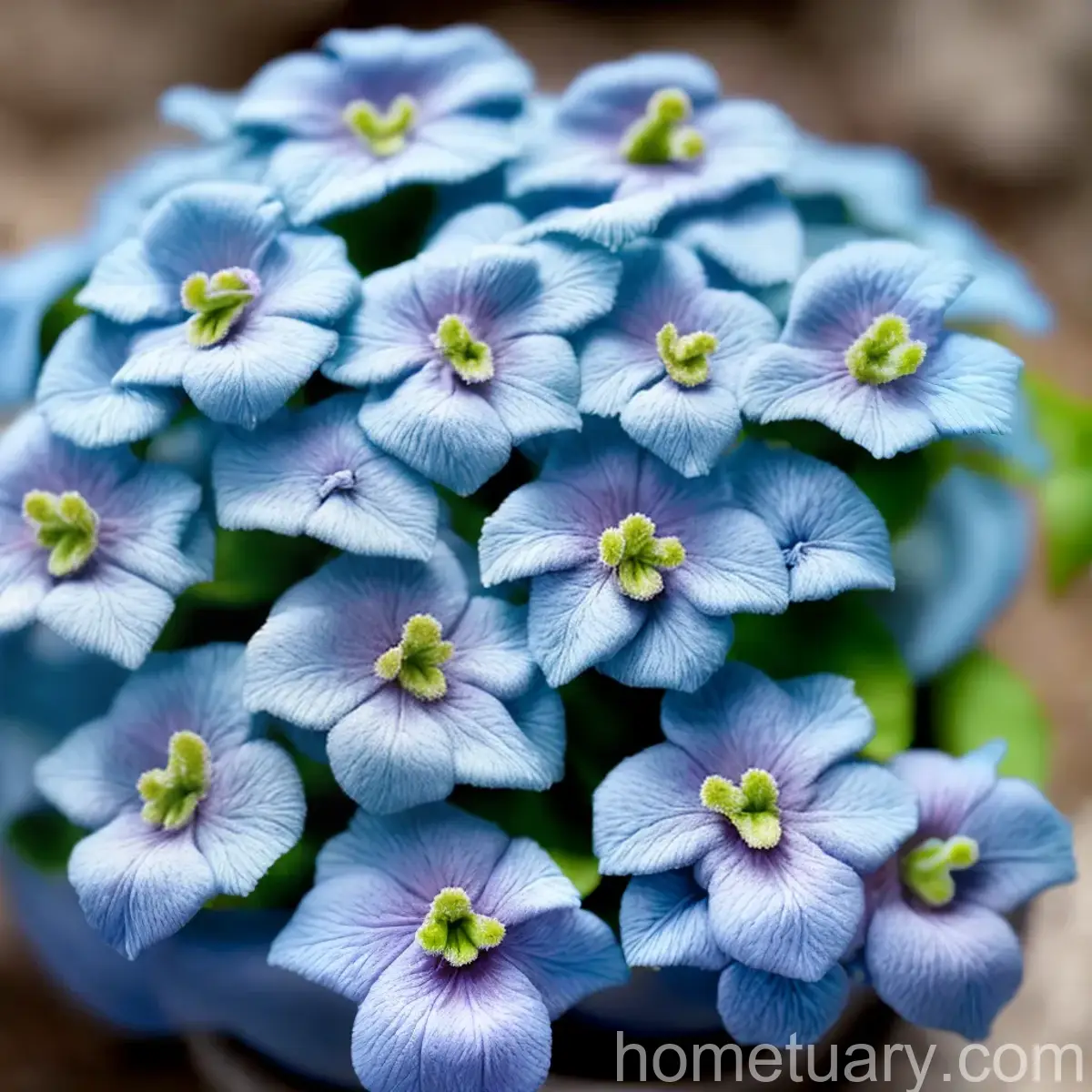Fraser Photinia (Photinia x fraseri ‘Red Robin’)
Plants play a crucial role in our lives, bringing beauty and life to our surroundings. One such plant that has gained popularity in the landscaping industry is the Fraser photinia, also known as Photinia x fraseri ‘Red Robin.’ This evergreen shrub is prized for its vibrant foliage and versatility in various horticultural settings. In this comprehensive guide, we will delve into the intricacies of caring for Fraser photinia, exploring its culture, uses, requirements, common diseases, pests, and much more. By the end of this article, you will be equipped with the knowledge to foster healthy and thriving Fraser photinia plants in your own garden or landscape.
Key Takeaways – Fraser Photinia (Photinia x fraseri ‘Red Robin’)
Before we dive into the specifics of Fraser photinia care, let’s highlight some key takeaways that encapsulate the essential aspects of this captivating plant:
- Botanical Name: Photinia x fraseri ‘Red Robin’
- Common Name: Fraser photinia
- Type: Evergreen shrub
- Notable Features: Bright red young leaves, dense foliage, white flowers, and red berries.
- Uses: Hedge plant, specimen shrub, landscaping feature, privacy screen, and container plant.
- Growth Rate: Moderate to fast
- Sunlight: Full sun to partial shade
- Soil: Well-draining, fertile soil
- Watering: Regular watering, especially during the establishment phase
- Hardiness Zone: USDA zones 7-9
- Maintenance: Pruning to maintain shape and encourage new growth
- Common Pests: Aphids, spider mites
- Common Diseases: Leaf spot, powdery mildew
- Benefits: Ornamental foliage, wildlife attraction, versatility in landscape design
With these key points in mind, it’s evident that Fraser photinia is a valuable addition to any garden or landscape due to its aesthetic appeal and functional properties.
What is Fraser Photinia?
Fraser photinia (Photinia x fraseri ‘Red Robin’) is a hybrid evergreen shrub that belongs to the Rosaceae family. It is a popular ornamental plant prized for its lush and glossy leaves, which emerge as bright red before maturing to a deep green hue. Additionally, this shrub produces delicate white flowers in spring, followed by clusters of red berries, adding further visual interest to the plant.
With its dense foliage and vibrant foliage, Fraser photinia is often utilized as a hedge plant, specimen shrub, or as part of a mixed border in landscaping. Its versatility extends to being a suitable candidate for container planting, making it an attractive choice for urban gardening and patios.
Now that we have an overview of the Fraser photinia plant, let’s delve deeper into its culture, preferred growing conditions, and the techniques for propagation and maintenance.
Culture
Understanding the cultural requirements of Fraser photinia is essential for ensuring its optimal growth and development. From sunlight preferences to soil requirements, each aspect plays a crucial role in determining the plant’s overall health and appearance.
Uses
Fraser photinia is a versatile plant that serves various purposes in both residential and commercial landscapes. Some of its primary uses include:
-
Hedge Plant: Due to its dense foliage and responsiveness to pruning, Fraser photinia is a popular choice for creating hedges, screens, or windbreaks. Its vibrant leaves and tolerance for shaping make it an ideal candidate for defining boundaries or adding structure to outdoor spaces.
-
Specimen Shrub: As a standalone plant, Fraser photinia functions as an eye-catching specimen shrub, particularly during the spring when it produces clusters of white flowers against a backdrop of rich green foliage. Its striking red new growth further enhances its visual allure.
-
Privacy Screen: When planted in a row or cluster, Fraser photinia can form an effective privacy screen, blocking unwanted views and reducing noise levels. The dense foliage and moderate height of the plant contribute to its effectiveness as a natural barrier.
-
Container Plant: Fraser photinia’s adaptability to container planting makes it an excellent choice for urban gardens, balconies, or patios. Its ornamental foliage and the potential for seasonal blooms add an element of elegance to outdoor spaces, even in limited areas.
Water
Like many plants, adequate water is crucial for the health and vitality of Fraser photinia. Here are some key points to consider regarding watering:
-
Establishment Phase: Newly planted Fraser photinia specimens require consistent moisture to aid in root establishment. Regular watering, particularly during dry periods, is essential for ensuring that the plant adapts well to its new environment.
-
Mature Plants: Once established, Fraser photinia typically displays good drought tolerance. However, during prolonged periods of dry weather, it’s important to provide supplemental irrigation to prevent water stress and maintain the plant’s overall vigor.
-
Watering Frequency: As a general guideline, aim to water Fraser photinia deeply but infrequently, allowing the soil to partially dry out between watering sessions. This encourages the development of a well-established root system and reduces the risk of waterlogged conditions.
Sunlight
The amount of sunlight a plant receives directly influences its growth, flowering, and overall health. In the case of Fraser photinia, sunlight preferences play a key role in promoting robust foliage and flowering. Here’s what you need to know about sunlight requirements for Fraser photinia:
-
Full Sun: Fraser photinia thrives in full sun, defined as at least 6-8 hours of direct sunlight per day. In full sun conditions, the plant exhibits vigorous growth, vibrant foliage, and a higher likelihood of abundant flowering.
-
Partial Shade: While Fraser photinia prefers full sun, it can tolerate partial shade, especially in regions with intense afternoon sun or during periods of extreme heat. When grown in partial shade, the plant may demonstrate slightly slower growth but should maintain healthy foliage and flowering capabilities.
-
Sun Exposure Considerations: When selecting a planting site for Fraser photinia, take into account the local climate and the intensity of sunlight throughout the day. Avoid locations with prolonged periods of deep shade, as this can result in reduced foliage density and potentially affect flowering.
Fertilizer
Proper fertilization is an integral part of maintaining the health and vigor of Fraser photinia. By supplying essential nutrients, you can support robust growth, vibrant foliage, and prolific flowering. Consider the following recommendations for fertilizing Fraser photinia:
-
Timing: Apply a balanced, slow-release fertilizer to Fraser photinia in early spring, just before the onset of new growth. This provides the plant with a nutrient boost as it enters its active growth phase, promoting lush foliage and robust flowering.
-
Frequency: For established plants, annual fertilization in spring is usually adequate. Young or recently transplanted specimens may benefit from an additional application of fertilizer in late summer to bolster their nutrient reserves before the onset of winter.
-
Fertilizer Composition: Opt for a complete, well-balanced fertilizer with a similar N-P-K ratio, such as 10-10-10 or 20-20-20, suitable for most ornamental shrubs. Slow-release formulations are advantageous, as they gradually release nutrients over an extended period, reducing the risk of over-fertilization.
-
Application Method: Spread the fertilizer evenly around the base of the plant, ensuring that it extends slightly beyond the drip line. Follow the manufacturer’s instructions regarding the specific application rates for ornamental plants.
Soil
The soil in which Fraser photinia is planted plays a pivotal role in its overall health and growth. Optimal soil conditions support root development, nutrient uptake, and water retention. Consider the following soil requirements for Fraser photinia:
-
Well-Draining Soil: Fraser photinia thrives in well-draining soil that prevents waterlogged conditions, which can lead to root rot and other detrimental issues. Amending heavy or compacted soil with organic matter, such as compost, can improve drainage and soil structure.
-
pH Level: The ideal soil pH for Fraser photinia ranges between 5.5 and 6.5, indicative of slightly acidic to neutral conditions. Conduct a soil test to determine the existing pH level and make any necessary amendments to align with the plant’s preferences.
-
Fertility: Rich, fertile soil that is high in organic matter provides an optimal growing medium for Fraser photinia. Incorporating compost or well-aged manure when planting new specimens can enhance soil fertility and support healthy growth.
-
Soil Structure: Loamy or sandy loam soils are well-suited for Fraser photinia, offering a balance of drainage and moisture retention. Avoid excessively heavy clay soils, as they can impede root development and proper aeration.
Pruning
Pruning is an essential aspect of Fraser photinia maintenance, influencing its overall appearance, health, and vitality. By following prudent pruning practices, you can shape the plant, encourage new growth, and maintain its desired size. Here are key considerations for pruning Fraser photinia:
-
Timing: Pruning is best conducted in early spring or after the plant has finished flowering, which is typically in late spring or early summer. Avoid pruning in late summer or fall, as this can stimulate new growth that may be susceptible to damage from frost in colder regions.
-
Pruning Objectives: When pruning Fraser photinia, objectives may include shaping the plant, removing dead or damaged branches, and controlling its size. Aim to maintain a natural, pyramidal form for hedges, while allowing individual shrubs to retain their natural habit.
-
Pruning Techniques: Use sharp, clean pruning shears to make precise cuts, avoiding tearing or crushing the plant tissue. Sterilize the pruning tools before and after use to minimize the risk of transmitting diseases between plants.
-
Rejuvenation Pruning: In some cases, older or overgrown Fraser photinia shrubs can benefit from more severe rejuvenation pruning to revitalize their appearance and promote new growth. Consult a horticulture professional for guidance on this method, as it requires careful execution to ensure the plant’s recovery.
Propagation
The propagation of Fraser photinia typically occurs through asexual methods, such as hardwood cuttings, to preserve the characteristics of the parent plant. Although the process requires meticulous attention to detail, successful propagation can yield new plants that retain the desirable traits of the original specimen. Here’s a general overview of propagation techniques for Fraser photinia:
-
Hardwood Cuttings: Propagation via hardwood cuttings is commonly used for Fraser photinia. Select healthy, mature stems from the parent plant in late winter, and prepare cuttings measuring 6-8 inches in length. Remove the lower leaves, dip the cut ends in rooting hormone, and plant the cuttings in a well-draining medium. Maintain consistent moisture and warmth to encourage root development.
-
Propagation Conditions: Provide a warm, humid environment for the hardwood cuttings, such as a propagation tray covered with a clear lid or plastic wrap. Place the tray in indirect light and monitor the cuttings regularly for signs of new growth, indicating successful root development.
-
Transplanting: Once the cuttings have developed a healthy root system, carefully transplant them into individual containers filled with a well-draining potting mix. Acclimate the young plants to outdoor conditions gradually before planting them in their permanent location.
Container Popularity
Fraser photinia’s popularity as a container plant stems from its adaptability to confined growing spaces and its ornamental attributes. When cultivated in containers, this charming evergreen shrub can grace patios, balconies, and urban landscapes with its vibrant foliage and potential for seasonal blooms. The following factors contribute to the widespread appeal of Fraser photinia in container gardening:
-
Compact Size: Fraser photinia’s moderate height and relatively slow growth make it well-suited for container planting, allowing it to thrive without overwhelming limited spaces.
-
Ornamental Value: The striking coloration of Fraser photinia’s young leaves, coupled with its white flowers and red berries, adds ornamental value to container displays, contributing to the visual appeal of urban gardens and outdoor living areas.
-
Versatility: Whether used as a standalone feature on a patio or as part of a container garden ensemble, Fraser photinia offers versatility in design, allowing for creative arrangements and combinations with other ornamental plants.
-
Seasonal Interest: With the potential for seasonal blooms and ornamental berries, Fraser photinia brings dynamic interest to container displays throughout the year, captivating onlookers with its changing foliage and occasional floral show.
Common Diseases
As with any plant, Fraser photinia is susceptible to certain diseases that can impact its overall health and appearance. By familiarizing yourself with these common ailments, you can take proactive measures to prevent and manage potential issues.
Disease Diagnosis
-
Leaf Spot: Leaf spot, caused by fungal pathogens, presents as dark spots on the leaves, often surrounded by a yellow halo. As the disease progresses, the affected foliage may become distorted or drop prematurely.
-
Powdery Mildew: Powdery mildew manifests as a white, powdery coating on the upper surfaces of the leaves. It can lead to stunted growth and reduce the plant’s aesthetic appeal.
-
Fire Blight: Fire blight, caused by a bacterial pathogen, affects various deciduous and evergreen plants, including Fraser photinia. Symptoms include wilting, browning of leaves and stems, and a scorched appearance, resembling fire damage.
Disease Management
-
Cultural Practices: Implement cultural practices that promote overall plant health, such as proper watering, adequate spacing between plants to ensure good air circulation, and regular removal of fallen leaves and plant debris.
-
Pruning: Prune out and dispose of infected plant parts promptly to minimize the spread of diseases. Use sterilized pruning tools to prevent transmission of pathogens.
-
Fungicidal Treatments: In severe cases, consider applying fungicidal sprays according to the manufacturer’s recommendations to combat fungal diseases. Consult with a local nursery or extension service for guidance on selecting suitable fungicides for Fraser photinia.
Common Pests
Pests can pose a nuisance to Fraser photinia, potentially impacting its foliage, flowering, and overall vitality. By identifying and addressing common pests early on, you can mitigate their potential impact and safeguard the health of your plants.
-
Aphids: These small, sap-sucking insects can infest the tender new growth of Fraser photinia, causing stunted growth and distortion of leaves. Additionally, aphids excrete honeydew, leading to the development of sooty mold on the foliage.
-
Spider Mites: Spider mites are tiny arachnids that can cause visible stippling or discoloration on the leaves of Fraser photinia. As they feed on plant sap, they weaken the foliage, potentially compromising the plant’s overall health.
Botanist’s Tips
As botanists and plant enthusiasts, we can offer valuable insights into nurturing Fraser photinia to ensure its long-term success in various horticultural settings. Here are some expert tips for cultivating and caring for Fraser photinia:
-
Optimal Planting Site: Select a well-drained planting site that receives ample sunlight, avoiding areas with prolonged periods of deep shade or poor air circulation. Enrich the soil with organic matter to provide an ideal growing medium for the plant.
-
Regular Monitoring: Maintain a routine of regular monitoring to detect signs of pests, diseases, or nutrient deficiencies early on. Prompt attention to these issues can prevent them from escalating and damaging the plant.
-
Mulching: Apply a layer of organic mulch around the base of Fraser photinia to conserve soil moisture, suppress weed growth, and moderate soil temperature. Mulch also contributes to the overall health of the plant by enhancing soil structure as it decomposes.
-
Establishment Care: Newly planted Fraser photinia specimens benefit from attentive care during the initial establishment phase. Provide consistent moisture, protection from extreme weather conditions, and occasional fertilization to promote healthy growth.
Fun Facts
-
Winter Foliage: Fraser photinia’s lush evergreen foliage remains vibrant throughout the year, offering an attractive display even during the winter months. The persistent leaves contribute to the plant’s visual appeal and its value in landscaping.
-
Wildlife Attraction: The white flowers of Fraser photinia can attract pollinators, such as bees and butterflies, adding a dynamic element to the garden ecosystem. The red berries that follow the flowers may also serve as a food source for certain bird species.
-
Color Variations: While the classic Fraser photinia variety is known for its red new growth, there are cultivars that exhibit variations in foliage color, such as those with pink or bronze-tinted leaves. These variations add diversity to the landscape palette.
With these fun facts in mind, you can appreciate the unique characteristics and ecological contributions of Fraser photinia in garden and landscape settings.
Links to External Resources
To further expand your knowledge and enhance your understanding of Fraser photinia, explore the external resources provided below:
- Royal Horticultural Society – Photinia Diseases
- University of Florida IFAS Extension – Photinia Insect Pests
- Missouri Botanical Garden – Fraser Photinia Care
- North Carolina State University Extension – Pruning Ornamental Trees and Shrubs
By exploring these valuable resources, you can access expert guidance and practical insights into the care, cultivation, and management of Fraser photinia plants.
Conclusion
Fraser photinia (Photinia x fraseri ‘Red Robin’) stands out as a versatile and visually captivating plant that holds immense potential for enhancing landscapes, gardens, and outdoor living spaces. By embracing the guidelines and recommendations outlined in this comprehensive guide, you can cultivate healthy, flourishing Fraser photinia plants while leveraging their ornamental value and functional benefits.
From understanding the cultural requirements and maintenance practices to addressing common diseases and pests, this guide equips you with the knowledge and expertise needed to foster thriving Fraser photinia specimens, whether as hedge plants, container features, or ornamental shrubs. With careful attention to its needs and regular monitoring, Fraser photinia can elevate the beauty and vitality of your outdoor environment, enriching your horticultural endeavors with its enduring charm.
Delve into the world of Fraser photinia, and unlock the potential for creating captivating landscapes, vibrant hedges, and inviting garden spaces graced by the appeal of this beloved evergreen shrub. Start your journey with Fraser photinia and embrace the joys of nurturing a plant that brings year-round beauty and lasting value to your home or landscape.




